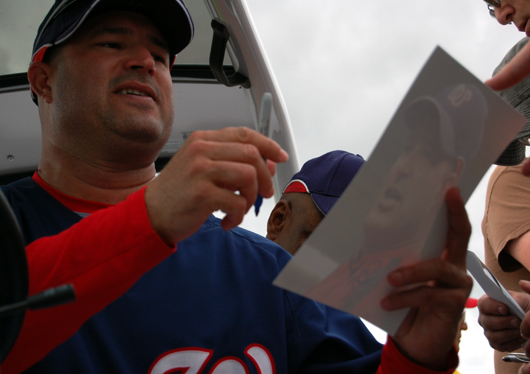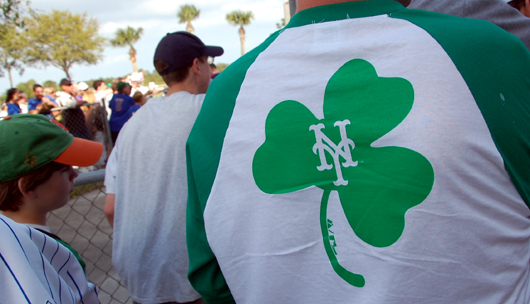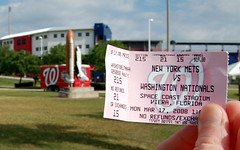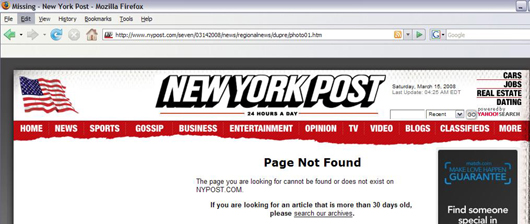Army Pfc. Jessica Lynch is awarded the Purple Heart after suffering injuries in a car accident in Iraq. The media once portrayed her as fighting her attackers in an Iraq war battle, but those actions actually were performed by Army Sgt. Donald Walters, who was killed. (U.S. Army photo by Brett McMillan)
Five years later and the same kind of stories are being pumped out of Iraq. Death. Heroism. Moral turpitude. Need I continue?And in a few examples, the same exact stories still are alive.To me, the most glaring is that of Pfc. Jessica Lynch, who was falsely credited with killing Iraqis on the battlefield. Truth is, her gun jammed, and she never fired a bullet. Truth is, someone - Sgt. Donald Walters, to be exact - did kill a bunch of Iraqis in the ambush of the 507th Maintenance Company.But Lynch is still a star, despite the phony way she achieved stardom. This story in U.S. News & World Report again has revived her celebrity.Former POW Jessica Lynch Recalls Her Captivity in Iraq
Lynch, Shoshana Johnson, and Patrick Miller talk to U.S. News about moving on
By Anna Mulrine
Posted March 18, 2008
And again, the story is the same old, same old: Lynch was a small-town girl propelled into the big-time spotlight. She still gets hate mail because some people think she wrongly capitalized on the incorrect version of the role she took in the battle. She still suffers effects of the injuries she received. She still is considered by some a hero just because she joined the military.
The story also has comments from two other soldiers who survived the ambush of the 507th, but it does not mention Walters - most likely because he died.
It is time I posted my academic and journalistic investigation into the events that led to, then perpetuated the mix-up of Lynch and Walters. Below I have strung some excerpts into a long but mostly cohesive summary. (It may be long, but it's only slightly longer than the U.S. News story, so read mine.)To download the full report to print and read in your spare time with a hot pot of coffee, just click here for the Word version and here for the PDF version.
Also, the following are PDF documents of the military investigation into Walters' case. They were obtained by his family through a Freedom of Information request. I obtained them from the family. None of this has been published until now.
Book1 Book2Part1 Book2Part2 Book2Part3 Book3Part1 Book3Part2 Book3Part3 Book3Part4 Book3Part5 Book3Part6 Book4Part1 Book4Part2 Book4Part3 Book4Part4 Book4Part5 Book4Part6 Book5Part1 Book5Part2 Book5Part3 Book5Part4 Book5Part5 Book5Part6 Book5Part7 Book5Part8 Book5Part9
Please, if you have time to read this, do. It's important because the story has never been covered to the extent that this report covers it. To prove that, here is part of an e-mail Walters' father sent to me about my research: "Of the reports and articles that we have read, yours was the most well researched, best documented, thorough, thought-out, logical and honest of them all. To say that we are ecstatic with the results of your project is an understatement. I would certainly award you the Pulitzer prize if it was within my power to do so. Unfortunately, as we have experienced so many times in the past, this will probably be as far as your investigation will ever go. We would like the government, the military, the media and the people to acknowledge the fact that they were wrong but they never will because the myth is far more interesting than reality."
Donald Walters and Jessica Lynch: fact and fiction on a battlefield
“She got a million-dollar book deal,” Norman Walters said about Lynch, “and my son got a gravestone,” above. (Photo provided by Norman and Arlene Walters)
United States Army Sergeant Donald Walters never signed a million-dollar book deal. He never made the front cover of Time, Newsweek or People. He never even had a hero’s welcome when he returned from duty in Iraq. He never had a chance to be a star.
He instead died in relative obscurity even though his story is unlike any other that came out of the Iraqi ambush that took his life.
On March 23, 2003, just three days after United States forces began their invasion of Iraq, Walters’ 507th Maintenance Company took a wrong turn in the desert and headed straight into the seething town of An Nasiriyah. As the unit’s vehicles broke down or ran out of gas, Iraqi fighters realized the Americans’ vulnerability and opened fire. After he was captured, Walters, a slim 33-year-old blond from Salem, Oregon, was stabbed brutally, shot in the leg, then fatally shot twice in the back.
But if it were up to the American media and military, the information about what Walters did before he died would have never came out. He fired every bullet that he was issued in order to provide cover for his fellow soldiers as they fled. Walters – who was just a cook for the 507th and was never supposed to fire a shot – killed numerous Iraqis, according to military sources, a Freedom of Information response and interviews with sources involved. He was fighting to the death. And after Fedayeen forces captured him, he was executed.
In a sense, Walters’ story did get told. In fact, it made headlines worldwide. But none of the newspapers, none of the magazines, none of the television networks used his name. Instead, they used the name of Private First Class Jessica Lynch, a 19-year-old blond-haired, “prissy girl” from the quaint town of Palestine, West Virginia.
In the April 3, 2003, issue of The Washington Post, a four-reporter team cited anonymous sources who said Lynch was “fighting to the death.” A headline with that partial quote captured readers worldwide. For the media, the Lynch story was a cinematic triumph-over-all-odds, stereotype-busting kind of story about a female Rambo. For the United States military, the Lynch story was a small victory in an otherwise disastrous ambush that left 11 soldiers dead.
But the story was wrong. It was based on mistaken identity and advanced by the military as propaganda. The Post used misinformation to set the agenda, and other American media seized the story as simply a great, feel-good tale.
The battle for An Nasiriyah, the first major conflict of Operation Iraqi Freedom, claimed 28 American troops altogether, making March 23, 2003, one of the deadliest days of the entire war. Walters was the first to die, but the last to be remembered. After Walters’ burial, it would take more than a year for any truth to emerge. It was a year in which his parents, Norman and Arlene Walters, joined their congresswoman, United States Representative Darlene Hooley of Oregon, in sending letters to President George W. Bush, Defense Secretary Donald Rumsfeld and several commanding officers of Walters’ company. Through four Freedom of Information requests, the truth of the battle was discovered in May 2004, on the fourth try, when the Pentagon released the results of an investigation that totaled more than 1,000 pages and proved Walters’ heroism. For that, he was awarded the Silver Star.
But still, the story never gained traction in the American media. In the year after the ambush, Lynch’s media celebrity overshadowed the Walters story. He was never as widely recognized in the mainstream press as Lynch was. Her biography, which was authored by former New York Times reporter Rick Bragg, instantly made The New York Times Best-Seller List. Lynch’s life had forever been placed into the limelight for no extraordinary reason.
“She got a million-dollar book deal,” Norman Walters said, “and my son got a gravestone.”
The attackWhen Lynch’s vehicle came under fire, the media led readers and viewers to believe her actions were similar to those of Walters. But in reality, things happened differently.
Two soldiers from a disabled vehicle jumped into the still-operational humvee with Lynch, one on each side of her. Those two soldiers, Sergeant George Buggs and Private First Class Edward Anguiano, returned fire while Lynch’s M-16 jammed, clogged with three days’ worth of blowing sand: It was “as useful as a hockey stick. … All the bullets and stuff just jammed up inside,” she told Diane Sawyer. That’s when Lynch buried her head between her knees and began to pray.
As Lynch’s humvee sped along, being driven by her friend, Private Lori Piestewa, it soon crashed into an Iraqi truck that was blocking the road, killing everyone but Lynch, who received broken bones, spinal injuries and head lacerations. When Lynch awoke, she was in Saddam Hospital being cared for by Iraqi doctors. After U.S. soldiers rescued her in a nighttime raid – the first successful rescue of a prisoner of war since World War II – the body of Walters was found in a shallow grave behind the hospital along with seven other fallen comrades and one Iraqi.
But for Lynch, a historic rescue set off a media frenzy that propelled her into international news coverage for years to come. She became, in many ways, the embodiment of the Iraq war. Her media celebrity was sparked by a green-tinged video shot by members of the rescue team. The video portrayed the team as being fired upon as it barged through doors of the hospital to get to Lynch.
The rescue, which ironically took place on April Fool’s Day, was exaggerated. In actuality, the Fedayeen, who once were guarding the hospital, had vacated the premises days before the rescue. The video was exaggerated.
Walters, Lynch mixed upMedia filled in the holes of the Lynch story, but for the parents of Walters, the nine days their son was missing were still empty. When they received autopsy reports months later, however, and compared his injuries with Lynch’s, something clicked.
Media reports said Lynch had been shot in the leg and stabbed twice in the abdomen, the same injuries that appeared on Walters’ autopsy report. “I remembered seeing it so well on TV when they rescued her,” Arlene Walters said. “They were saying she was stabbed twice and shot in the right leg. But Donald was the only soldier stabbed twice in the abdomen and shot in the right leg. That was all attributed to Jessica.”
The initial Army report about the ambush had given some indication of Walters’ heroism, but it wasn’t conclusive. Though their son had been awarded the Bronze Star, just as Lynch had, Arlene and Norman Walters believed that there was more to the story and that their son deserved to be recognized further.
They filed four Freedom of Information requests for the records of the Army investigation into the death of their son and other information concerning the nine days from the time his fellow soldiers left him behind, to the time his body was found behind the hospital where Lynch was rescued. In addition, their Democratic congresswoman, Darlene Hooley of Oregon, in a 2004 letter obtained by The Offlede, pressured Defense Secretary Donald Rumsfeld to investigate.
“I believe it is imperative for the family of Sgt. Walters, as well as the families of the other casualties of this ambush, that the truth is investigated and reported,” Hooley wrote.
A communication errorThe Washington Post’s erroneous April 3, 2003, report was based on unidentified sources who cited field intelligence reports. Those reports documented the National Security Agency’s surveillance of Iraqi radio transmissions or cellular-telephone conversations that, hours after the ambush, described “an American female soldier with blond hair who was very brave and fought against them.” The source said she had fired all of her ammunition. Being the only blond woman in the company, the feat was attributed to Lynch.
But in a World News Tonight broadcast on July 22, 2003, ABC correspondent Jim Wooten cited an official report that suggested the Iraqi telephone calls accurately described a different soldier. “It’s pretty clear this is what happened,” Wooten said during the broadcast. “American translators misunderstood two very similar Arabic pronouns, confusing ‘he’ with ‘she.’ And the ‘he,’ as it turns out, was this man … Donald Walters.”
Arlene Walters told The Offlede that this story later was confirmed by Captain Troy King, the commanding officer of the 507th. “Captain King said himself that it was not a female soldier fighting and doing all these things. That was Don,” she said.
Army Brigadier General Howard Bromberg responded to an early 2004 letter that was sent by Arlene Walters to the White House, which was then forwarded to the Pentagon. In the letter obtained by The Offlede, Bromberg wrote, “We believe Sergeant Walters fought bravely and that his actions likely prevented his unit from suffering additional casualties and loss of life.”
Paige Parker, a reporter for The Oregonian who reconstructed the incident, said in an interview that the story of Walters’ heroism was very plausible “given the condition of his body and the initial physical description of the soldier” who was fighting to the death.
And on March 19, 2004, Hooley told the Walters that their son “was indeed the brave soldier mentioned in the report and that he was to be recognized for his gallantry in battle.”
Finally, an official responseIn May 2004, hundreds of pages of documents handed over to Norman and Arlene Walters as the result of a Freedom of Information request showed that their son had fired 201 shots from the total 210 bullets that were issued for his M-16 rifle, as evidenced by the shell casings found at the scene of the ambush. After firing his weapon repeatedly, Walters was captured, then taken to an Iraqi military building in An Nasiriyah, the documents say. Marines later found blood at the base of that building and matched it to Walters’ DNA. Until the Marines found the blood, Walters’ death was thought to have been combat-related. After medical examiners were given the case, however, they ruled it a homicide. Walters had been a prisoner of war.
Until the culmination of the investigation, the military was uncooperative with the family. Arlene Walters said the military’s “rudeness” included the failure to notify them of their son’s status during the days in late March 2003 when Walters was missing, and an inconsiderate military grief counselor who attended Walters’ funeral at Fort Leavenworth, Kansas.
“We were treated like second-class citizens,” she said. The Pentagon wouldn’t cooperate because officials thought that the Walters family might have been estranged from their son, she said.
A policy of telling a victim’s parents, not just the spouse and children, was added to the death-notification process after Walters’ murder.
Lynch disavows media claimsTo Lynch’s credit, she has said that Walters deserves to be called a hero. The House Oversight and Government Reform Committee in April 2007 called a hearing to investigate the military and media deception in the cases of Lynch and former National Football League star and Army Corporal Pat Tillman, whose death in Iraq also was shrouded in military mismanagement and cover-up. Lynch told the committee: “I am still confused as to why they chose to lie and tried to make me a legend when the real heroics of my fellow soldiers that day were, in fact, legendary. … People like Patrick Miller and Sergeant Donald Walters who actually fought until the very end.”
An attractive news storyThough plenty of evidence existed against it, the military was slow to denounce The Washington Post’s account, and Lynch became, in many ways, one of the most recognizable – and attractive – representations of the patriotic American GI.
In a story that was published on the same day as the originating Washington Post account, reporters said “the White House viewed yesterday as an excellent message day” because of the news of Lynch’s rescue and of Iraqi civilians welcoming American troops in Najaf. In the originating piece, Senator Pat Roberts, a Republican from Kansas, said: “Talk about spunk! She just persevered. It takes that and a tremendous faith that your country is going to come and get you.”
An analysis of that April 3, 2003, coverage that said Lynch “was fighting to the death” reveals many indicators of the military’s stake in the apocryphal campaign. First, the danger of using unidentified sources proved damaging to The Post’s reputation. The story doesn’t specify whether the source for the quote “fighting to the death” was a military official, a Bush administration official or some other political official. The story just read, “one official said.”
But in the end, the media was much more open to the story of Jessica Lynch, the survivor, than to the story of Donald Walters, the dead soldier. “It’s not a happy story,” said Dante Chinni of the Project for Excellence in Journalism. “You don’t want the negative story out there because it exposes the reports about how screwed up everything got and how bad the situation was. It’s not just about protecting the Lynch story: It’s about making sure the bad news doesn’t get out.”
Michael Getler, who was the ombudsman at The Post during the Lynch saga and is now the ombudsman at PBS, told me that the source for the story likely contacted The Post, further raising suspicion of the source’s accuracy and motive.
The story “was reported in almost the World War II-propaganda style where this young woman goes down, guns blazing and is shot and stabbed, and none of that happened,” Getler said in an interview.
So the novelty of Lynch as the down-home girl from West Virginia helped perpetuate a story that arose from the military’s propaganda and the media’s retelling of the military’s version of events. This was the kind of thing movies are made of. It echoed earlier stories and fairy tales of plucky women fighting against the odds. “She was the girl next door for the middle-America audience,” Hanson said. “She was just tailor-made. As soon as I saw her picture when she was missing, I knew that this was going to be big. She was the face of the war.”
Blind journalism at The Washington PostUntil April 3, 2003, readers of false reports from The New York Times and The Associated Press, which said a woman had been shot and stabbed, did not have a greater idea of how Lynch got those injuries until The Post kicked coverage up a notch and said she had been “fighting to the death” and was injured during that firefight against Iraqis.
“There were a lot of holes in the story, so there was competition to fill the holes,” Hanson said. “The Post was the one that filled them.”
If Internet surfers were to search on Google.com for the terms “fighting to the death,” the first result they would receive is the April 3 story in The Post titled “She Was Fighting to the Death.” Out of 547,000 search results (which has grown from 66,200 at the original writing of this investigation), the first is The Post’s inaccurate report of what happened on March 23, 2003, during the ambush of the 507th Maintenance Company. Adding “Lynch” to the search returns 8,840 documents (636 at original writing). A Google search for “Private Jessica Lynch” returns 20,200 documents. A Google search for “Sergeant Donald Walters” returns 1,300 documents. That’s at least a symbol of how this story has persisted and has trumped many others that came out the ambush of the 507th, such as the story of Walters. Today, it is possible that in the eyes of many members of the public, the story is still framed the way it originally was published in The Post.
“We want history to be correct,” Arlene Walters said. “Don had three kids, and when they grow up, they would like to hear what their dad did instead of giving the credit to someone else. Any history should be correct.”
The rash of stories that developed after April 3, 2003, can be traced back to The Washington Post. Throughout the day on April 3, a plain young woman, Lynch, transmuted into a modern war icon as journalists, anchorpersons, commentators and politicians readily accepted The Post account as fact.
In describing her, a Fox News anchorwoman said: “Hard as nails. That’s what they’re saying about Private First Class Jessica Lynch.” Bill Whitaker, a CBS News reporter, said: “She shot until she ran out of ammunition. Shot several Iraqi soldiers, even though she herself had been wounded.” NBC, CBS, NPR and CNN all repeated the exact quote, “she was fighting to the death,” that was cited by The Post on April 3. And in perhaps one of the earliest quotations of The Post, anchorwoman Katie Couric repeated the quote on NBC’s Today Show and said: “She fired her weapon until it ran out of ammunition. She sustained multiple gunshot wounds. She watched several soldiers in her unit die around her. She was fighting so hard, did not want to be taken alive.”
Over the two weeks after April 3, 2003, Lynch was mentioned in major newspapers 919 times, according to LexisNexis. General Tommy Franks, the war’s commander, got 639 references, while Vice President Dick Cheney got 549 and Deputy Defense Secretary Paul Wolfowitz had 389. “She stood with giants,” journalism professor Christopher Hanson of the University of Maryland said in an interview.
Sergeant Walters, however, got just 34 references during that period.
A story that won’t go awayFor The Washington Post, the Lynch story was largely its baby. Her fame was the newspaper’s creation. In the June 17, 2003, story that looked back on the Lynch case, Post reporters took another stab at explaining what had happened during the ambush of the 507th and the subsequent rescue of the private. But it came up short. The story was mostly about Lynch’s injuries, not the media’s mistakes. It does not even mention the criticism the newspaper received for the erroneous April 3 story until 432 words into it on page A16, the second, “jump” page. The newspaper has not yet owned up to its mistakes.
Meanwhile, Norman and Arlene Walters used every chance to publicize their son’s story, never to any great avail. They said they were interviewed for two hours for ABC’s Primetime special about Lynch titled “Private Jessica Lynch: An American Story” but were on air for less than 15 seconds. The Post interviewed Arlene Walters twice, but never for comment about her son’s heroic role in the ambush that originally was credited to Lynch.
“That’s where it was left,” Norman Walters said about his son’s story. “There was no follow-up to it to any great extent, and because of that, I get frustrated with it. It’s something that was just left unfinished. It’s a frustrating, irritating and aggravating subject. But it’s not because of what Jessica Lynch did or didn’t do. It’s the fact that the government and the media never really did bring the attention to it in the way they should have.”
Media stardom and media black holeWhile lying in a military hospital in Landstuhl, Germany, Private First Class Jessica Lynch said in Time magazine that she asked her mother: “Did I make the hometown Journal?” Her mother answered back: “Yeah, you made it, plus all these world papers.”
Sergeant Donald Walters now lies in a cemetery at Fort Leavenworth, Kansas. While stationed on the border just inside Kuwait in early 2003 and waiting to enter Iraq for the first stage of Operation Iraqi Freedom, Walters sent his parents in Salem, Oregon, a ripped-out page of a military magazine. It was an advertisement for a casket specially made for Army soldiers such as him. Arlene Walters, the sergeant’s mother, recalled that her son had said: “Mom, if something happens to me, I want that casket. I might not make it home.”
Indeed, Walters never made it home, and because of a case of mistaken identity, his story never gained ground in the mainstream media while Lynch’s story took off despite its apocryphal foundation.
After the Lynch report was disproved, it persisted because she was a woman from a small town who entered the military to do something big. It was still a big story – big enough for a movie and a book and free tuition to West Virginia University, where Lynch would pursue her dream to become a schoolteacher.
There simply was not enough novelty to the Walters story. He was older – 33 compared with Lynch’s 19. He was twice divorced and had three daughters; she was just out of high school.
But Walters, like Lynch, aspired to help children. His method was through children’s books. His first work, “My First Fishing Trip,” chronicled the first time his father took him and his sister fishing while his father was stationed with the Air Force in Kansas. His family could not get it published. Plus, Walters was dead. If a book were to be written or a movie were to be made about him, it would not have a happy ending.
The cases of Army Private First Class Jessica Lynch and Sergeant Donald Walters illustrate the power of a particular segment of media to lead others. It also illustrates journalists’ ignorance of truth and willingness to suspend belief of any information contrary to a good story. Wendy Swallow, journalism professor emeritus at American University, once said, “It was a good story … until we did some reporting.”
The Washington Post reporters assumed the roles of publicists, advancing that good story and serving as springboards for a myth. They did not wait. They did not hold. They did not consider evidence that would have pointed to another soldier – Sergeant Donald Walters, the true hero of the ambush on the 507th Maintenance Company. The media failed to give credit where credit was due. “I think they owe it to me, truthfully,” his mother said, “and to the memory of my son.”

 Third, I'll be heading to Denver for my second external training mission (the first was a newspaper design conference in Tampa). That will be the three-day national conference of the American Copy Editors Society (but I'll be there for five days). I will meet with other such journalists to commiserate about our jobs and will reconnect with some old friends.
Third, I'll be heading to Denver for my second external training mission (the first was a newspaper design conference in Tampa). That will be the three-day national conference of the American Copy Editors Society (but I'll be there for five days). I will meet with other such journalists to commiserate about our jobs and will reconnect with some old friends. All of this has made me think about how far I've come since leaving Maine. I took the nation's capital by storm, graduated with my master's from American University, enjoyed Philadelphia and the ultimate copy editing teacher in professor Ed Trayes, left, at Temple University and loved my internship at Newsday.
All of this has made me think about how far I've come since leaving Maine. I took the nation's capital by storm, graduated with my master's from American University, enjoyed Philadelphia and the ultimate copy editing teacher in professor Ed Trayes, left, at Temple University and loved my internship at Newsday.

 “
“
 Today, it wasn’t.
Today, it wasn’t. We teased a snake with a stick.
We teased a snake with a stick.













 I felt luck was on my side most of the day. I got a sweet ticket in section 215, row 21, seat 15. With that numeral repetition, I must have had something going on.
I felt luck was on my side most of the day. I got a sweet ticket in section 215, row 21, seat 15. With that numeral repetition, I must have had something going on.












 Despite a personal fortune developed on Manhattan's highfalutin law scene, New York Gov. Eliot Spitzer also was the highest-paid governor in 2007 with a $179,000 salary. Of course, that pleasure will pass to Lt. Gov. David Paterson, a more modest Harlem native who failed the state's bar exam.
Despite a personal fortune developed on Manhattan's highfalutin law scene, New York Gov. Eliot Spitzer also was the highest-paid governor in 2007 with a $179,000 salary. Of course, that pleasure will pass to Lt. Gov. David Paterson, a more modest Harlem native who failed the state's bar exam. Some other notable donors were:
Some other notable donors were:










